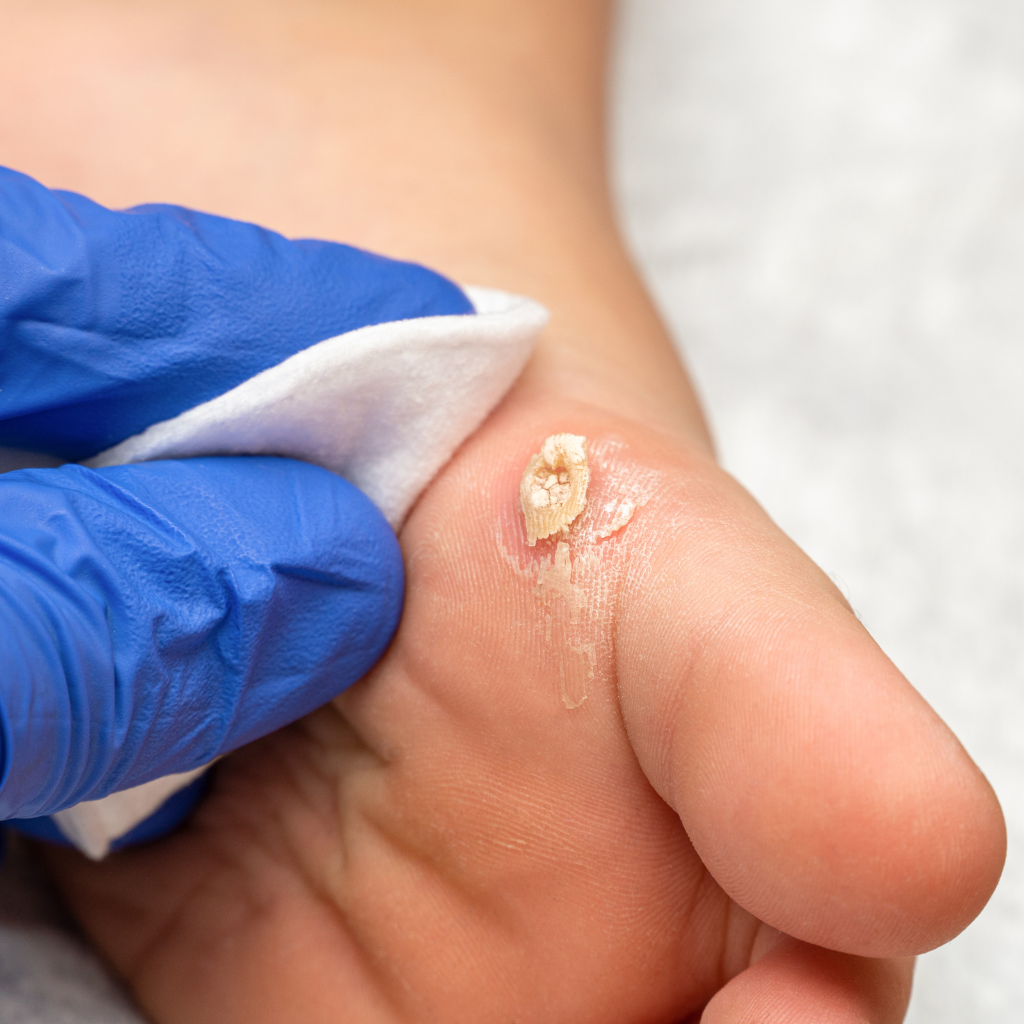What Is Wart Removal? Effective Remedies to Get Rid of Warts
- Home
- Mole, Wart & Skin Tag Removal
- What Is Wart Removal?

You’ve probably noticed an unsightly wart at some point and wondered how you could get rid of it. Wart removal isn’t just about aesthetics; it’s essential for your skin health, mainly since warts stem from the human papillomavirus (HPV). From freezing methods like cryotherapy to applying salicylic acid, the options are varied. You might even be tempted to try home remedies, such as duct tape or apple cider vinegar. But how do you know which method will work best for you, and are there any risks involved? Let’s explore the most effective treatments that could help you say goodbye to warts for good.
What Causes Skin Warts?
Skin warts are primarily caused by the human papillomavirus (HPV), which infects the top layer of your skin, usually through cuts or scrapes. As the virus proliferates, it leads to the rapid growth of cells on the outer skin layer, forming the typical wart. While generally benign, it’s still wise to evaluate persistent, painful, or atypical lesions—especially if you’re also dealing with hyperpigmentation or post-inflammatory skin changes.
Understanding the Wart Virus: HPV
Warts are caused by certain strains of HPV that target keratinocytes and create the rough texture of skin warts. Transmission can occur by direct contact with warts or indirectly via contaminated surfaces. A strong immune response can suppress the virus and help warts resolve; weaker responses may allow persistent growths. Below is a quick table of HPV-wart basics:
Aspect | Detail |
Strains Involved | HPV-1, HPV-2, HPV-4 (common warts) |
Common Sites | Hands, feet, elbows, knees |
Transmission | Direct contact, contaminated surfaces |
Immune Response | May suppress or fail to detect the virus |
Potential Spread | Can stay localised or autoinoculate nearby skin |
Understanding these factors helps prevent the spread and guides treatment choice.
How Do Warts Develop on the Skin?
Once HPV penetrates the epidermis, it hijacks the cell cycle and accelerates skin cell production, producing the rough, hardened wart. Minor cuts, abrasions, or macerated skin increase risk. The strain and site influence how a wart looks and responds to treatment. In some skin care regimens, body peels may be used in conjunction with wart treatment to improve texture and tone once lesions are resolved.
Are Warts Harmless or a Sign of Something More?
Most are harmless skin growths, but stubborn, painful, bleeding, or rapidly changing lesions should be assessed. People with a compromised immune system often need clinician-directed care.

What Do Warts Look Like?
Warts are typically rough, skin-colored (or darker) papules. Appearance varies by type and location.
Identifying Different Types of Warts
Plantar warts appear on soles (often painful with pressure); flat warts are smoother and often on face/forearms; common warts favour hands; filiform warts are threadlike; genital warts require STI-savvy care. Many respond to salicylic acid or cryotherapy; some need laser, electrosurgery/curettage, or immunotherapy. Choosing the right option can help not only eliminate the lesion but also remove warts and restore the skin’s appearance with minimal risk of scarring.
Common Locations for Warts on the Body
Hands, feet, and face are common sites—often where skin is broken or high-friction. Quicker action for wart removal may be chosen for comfort or cosmetic reasons. Plantar warts can grow inward and be tender with walking; any bleeding, colour change, or rapid growth warrants a healthcare provider check.
Best Wart Removal Methods: How to Treat Warts Effectively?
See a doctor if home treatment fails or if the wart is painful, spreading, or in a sensitive area. Cryotherapy with liquid nitrogen freezes tissue so it sheds in 1–2 weeks (often needs repeat sessions). Salicylic acid gradually dissolves wart layers with consistent use.
When to See a Doctor for Wart Removal
Seek professional advice for warts on the face/genitals, rapidly changing lesions, many warts, diabetes/poor circulation, or if DIY care hasn’t worked. A clinician will match the method to wart type, location, downtime, and scarring risk.
Exploring Cryotherapy and Liquid Nitrogen Treatments
Liquid nitrogen is applied by swab or spray to freeze the wart, creating a blister that later sloughs off. Larger or stubborn warts may need multiple sessions; treatment is performed in a controlled setting to protect surrounding skin.
The Role of Salicylic Acid in Wart Treatment
Salicylic acid (typical OTC 17% for thin skin; stronger for thicker skin as advised) is a proven keratolytic that peels wart tissue gradually. Soak, apply, protect surrounding skin, and debride dead tissue between applications for best results.
How the Immune System Helps Get Rid of Warts
Many warts clear spontaneously as immunity recognises HPV. Office immunotherapy (e.g., Candida antigen injections or topical immune modulators) may be used to stimulate clearance for recalcitrant warts.

Frequently Asked Questions About Wart Removal
What is wart removal called?
It’s an umbrella term for methods like salicylic acid therapy, cryotherapy, cantharidin application (blistering), electrosurgery/curettage, excision, laser, and immunotherapy.
What do doctors use for wart removal?
Standard in-office options include liquid nitrogen cryotherapy, cantharidin, high-strength salicylic acid, trichloroacetic acid, electrosurgery & curettage, laser, and immunotherapy.
Is wart removal permanent? Does wart removal leave a scar?
HPV can recur; multiple sessions are common. Scarring risk is generally low with salicylic acid and careful cryotherapy, but higher with excision/electrosurgery/laser—discuss risks with your clinician.
How long does a wart removal take?
Office procedures are brief (minutes), but several visits may be needed. Home salicylic acid often requires daily use for weeks.
How long do blisters from wart removal last?
After cryotherapy or cantharidin, blistering and sloughing commonly resolve in about 1–2 weeks.
What is plantar wart removal?
Treatment for sole-of-foot warts; pressure makes recovery slower. Options include salicylic acid, cryotherapy, debridement, immunotherapy, and sometimes laser/excision.
What is genital wart removal?
Care for an STI-related wart; typically handled by clinicians using imiquimod, other topicals, cryotherapy, or surgical methods.
Can you put wart removal on a bleeding wart?
No—stop DIY care and see a clinician if a wart is bleeding, infected, or very painful, or if you have diabetes, neuropathy, or poor circulation.
How can you get rid of scars from wart removal?
Discuss scar-care (silicone, sun protection, time; procedural options if needed) with your clinician, especially after surgical or laser methods.
Conclusion
Effective wart removal starts with the correct diagnosis and method for your wart type and skin. Many resolve with salicylic acid or cryotherapy; recalcitrant cases may need immunotherapy, laser, or electrosurgery. Work with a professional to balance speed, comfort, and scarring risk.

Highly skilled cosmetologist at Tune Clinical Aesthetics, specializing in advanced skin and hair treatments.





